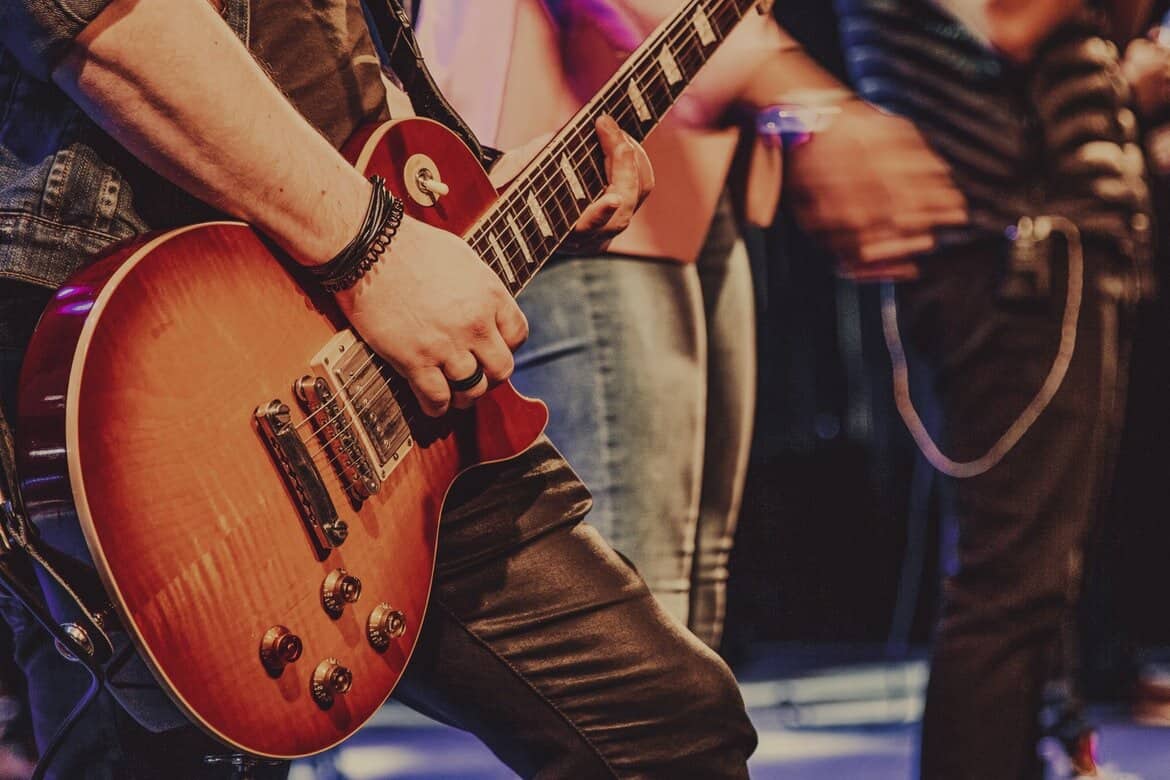Getting to learn the songs you like on guitar is one of the milestones most players are eager to.
Finally, your dream of playing along that track begins to come true.
The thing is that while chords and riffs are rather easy to grasp, given enough time, tackling someone else’s solos might feel like an overwhelming task
But are there any easier ways out?
Should you really learn guitar solos note by note?
Whether you should learn a solo note by note will depend on why are you learning it. If you are just practicing, paying attention to the structure and getting the main parts is enough. For a live cover, it will depend on how faithful you or your band wants to be to the original material.
In this article, I will dive deeper into this topic, and help you make up your mind about how much should you spend transcribing solos.
After leaving this page you will know what level of dedication you should be having given your needs.
Are you ready to get started?
Let’s go!
Do you have to learn guitar solos note by note?
As I repeat over and over again on this website:
There are no rules in music.
Nobody is forcing you to do anything unless it’s your job to play a record exactly note for note.
If that’s the case, well, there’s not much to discuss, pal.
However, if your situation is not that clear, there are some alternatives or places in between learning a solo note by note and improvising your own thing.
For instance, what many players choose to do is learn by heart the most “iconic” parts of a solo, and mix them with their own along the way.
Finally, there’s something important that comes from transcribing solos note by note, and it’s getting a deep dive into the mind, and way of thinking about the instrument of another playing.
You can get many gold nuggets that will add up to your tricks and licks arsenal by learning solos and songs note by note.
Do cover bands play solos exactly as recorded?
I don’t think I could give you a conclusive response generalizing the behavior of all cover bands out there.
In my experience, bands focused on a single artist tend to be extra faithful to the material, especially if their audience looks up to them as an alternative to the real deal.
Queen tribute concert attendees will be expecting those iconic Brian May solos played exactly “right”.
Multi artist or “party” cover bands are a bit more relaxed. There you can find most cases of the band imprinting their own personality into the songs.
However, as a live music listener, when a guitar player nails a solo exactly as the record, it always feels quite a bit special.
But maybe that’s just me!
Add some of your own playing to the solos you are working on
As I mentioned earlier, if the audience expects you to do so, a great way of tackling this situation is by adding some of your own to someone else’s solo.
And the best way to go on with this, in my opinion, is by keeping the most recognizable parts of the solo in and merging them with your own ideas and playstyle.
But how can we generalize this idea of the most popular parts of a guitar solo so that the concept becomes clear as water?
Well, the intro, or first bars, and the final ones, and how they blend into the rest of the song are fundamental.
You then can look for melodic lines within the structure.
These lines are those that are easily singable by a drunk crowd.
As a rule of thumb, fast licks and scale runs, in most cases are absolutely forgettable and replaceable.
But don’t go too far when interpreting someone else’s solo
Adding your personality to someone else’s song is encouraged in most cases, and it’s what gives covers that edge and fresh feeling.
However, I would consider the depth of the variations you are willing to put into the tune.
There’s a hard-to-hit sweet spot where the songs remain being close to the original, but your band’s personality is clear through your arrangement, and that’s where you should be aiming at.
For instance, I wouldn’t really mess with the first 2 melodic solos on Sweet Child O’ Mine, however, I could see myself playing some different licks on the big final solo.
Each situation will require some deliberation and discussion with your bandmates, but I’m pretty sure you would finally arrive at the correct amount of “interpretation” if you give it some serious thought.
Do memorizing solos get easier with time?
It will vary from player to player, but I do think that memorizing riffs, licks, and solos particularly gets easier with time.
You will start seeing patterns within the music the more you play. You will even be listening to a completely new song and know exactly what the guy did there.
A great tip I can give you, and as though you might refrain from doing it at first, is singing every part you are struggling to make sense of.
Is there any trick for learning guitar solos faster?
The famous physicist Richard Feynman once said that you only understand a complex concept if you can explain it simply to someone else.
I probably butchered that quote, but you get the idea.
This relates to what I said just earlier about singing the parts of a solo you are having trouble learning.
Singing deconstructs the piece in a way that becomes way more digestible for your brain.
Of course, another great trick is slowing down the whole thing.
If you are having trouble listening, YouTube has the option of getting any video down to a quarter of its original play speed.
Finally, you can also visualize yourself playing the whole thing in your head.
Yes, just imagine yourself playing through the solo note by note on your head. Think of how it will sound, and how it feels on your fingers.
This might sound crazy, but exercises like this are great practice when you don’t have your instrument around.
Is it better to learn solos by ear or with tabs?
Learning solos by ear is the superior alternative, in my opinion. You will be developing a great skill that will benefit many other parts of your musicianship, and also it will become easier the more you do it.
Tabs, on the other side, are extremely convenient when you just want to play, or really need to get something under your fingers quickly.
There’s no shame in that.

Hello there, my name is Ramiro and I’ve been playing guitar for almost 20 years. I’m obsessed with everything gear-related and I thought it might be worth sharing it. From guitars, pedals, amps, and synths to studio gear and production tips, I hope you find what I post here useful, and I’ll try my best to keep it entertaining also.





